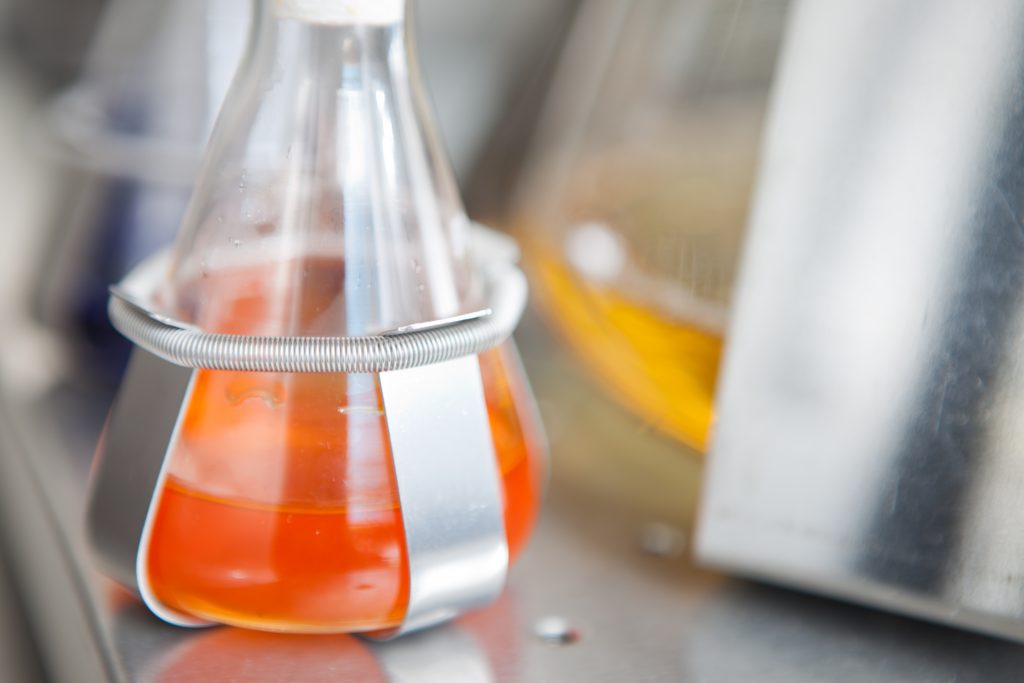RESEARCH LINES
ATP synthase membrane biophysics
intro
F1Fo-ATP synthase, also known as ATP synthase, plays a central role as a membrane protein in the cell. It facilitates the synthesis of biochemical energy ATP through a rotational mechanism driven by a proton gradient across the hosting membrane. This molecular motor exhibits reversibility and an excess of ATP results in a reversal of rotation direction and a counter flow of protons [1]. One key difference between eukaryotic and prokaryotic ATP synthases lies in their structure. In particular, in the presence of extra subunits located near the peripheral stalk. Some of these subunits participate in the formation of ATP synthase dimers [2]. Thus, the mitochondrial ATP synthase form dimers in the membrane [3] whereas the prokaryotic counterparts are predominantly understood to exist as a monomer. ATP synthase dimers accumulate into highly curved membranes [4], maintaining the sharply curved edges of mitochondrial membranes; referred to as cristae.

Interestingly, active systems that transform external energy into rotational motion often referred to as «spinners» showcase a fascinating collective behavior. Both theoretical and experimental studies have shown that rotating particles within fluid media lead to a range of collective phenomena, including clustering, phase separation, spatial reorganization and synchronization [5]. To a lesser degree, the emergence of ordered self-assembled configurations of active spinner materials has been also discussed in terms of rate of energy dissipation.
Inspired by this rich behavior, we address the question whether the formation and regulation of the membrane invaginations in mitochondria could arise from a complementary mechanism beyond structural considerations. Specifically, we explore whether the rotatory movement of ATP synthase might serve as a governing factor in membrane remodeling and protein self-assembly [6].
A first achievement by the MML was the first reconstitution of active ATP synthases into Giant Unilamellar Vesicles [7]. Upon rotation, ATP synthases promote large non-equilibrium fluctuations at discrete hot spots compatible with an accumulation of proteins at highly curved membrane sites. A direct demonstration of a curvature−protein coupling was recently observed by the active sorting of ATP synthases in curvature gradients using micromanipulation and tube pulling experiments [8]. The curvature-seeking behavior of rotating ATP synthases might be sustained by a weak membrane-mediated attractive interaction produced by a hydrophobic mismatch upon protein rotation. The formation of transient protein dimers produces a conic-like arrangement of proteins leading to the dynamic coupling between protein shape and membrane curvature. The MML is currently exploring the dynamic behavior of rotating ATP synthases when embedded in phase-separated membranes and in membrane viscosity gradients.
Although our results suggest a new role of the rotational movement of ATP synthases for their dynamic self-assembly in biological membranes; our efforts focus on new approaches using complex living systems to further connect molecular-level details to native biomembrane behavior.
references
- H. Noji H, R. Yasuda, M. Yoshida, K, Jr Kinosita. Nature 386, 299-302 (1997)
- I. Arnold, K. Pfeiffer, W. Neupert, R.A. Stuart, H. Schägger. EMBO J., 17, 7170-7178 (1998)
- F. Minauro-Sanmiguel, S. Wilkens, J.J. García. Proc Natl Acad Sci USA 102, 12356-12358 (2005)
- K.M. Davies, C. Anselmi, I. Wittig, J.D. Faraldo-Gómez, W. Kühlbrandt. Proc Natl Acad Sci USA109, 13602-13607 (2012)
- N.H. Nguyen, D. Klotsa, M. Engel, S.C. Glotzer. Phys Rev Lett 112, 075701 (2014)
- V.G. Almendro-Vedia, P. Natale, D. Valdivieso González, M.P. Lillo, J.L. Aragones, I. López-Montero. Arch Biochem Biophys 708,108939 (2021)
- V.G. Almendro-Vedia, P. Natale, M. Mell, S. Bonneau, F. Monroy, F. Joubert, I. López-Montero. Proc Natl Acad Sci USA 114, 11291-11296 (2017).
- D. Valdivieso González, M. Makowski, M.P. Lillo, F.J. Cao‐García, M.N. Melo, V.G. Almendro‐Vedia, I. López‐Montero. Advanced Science 10, 2301606 (2023)